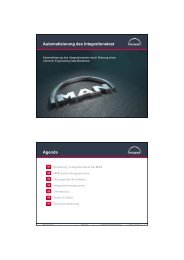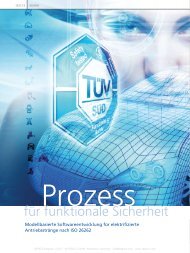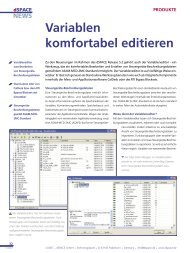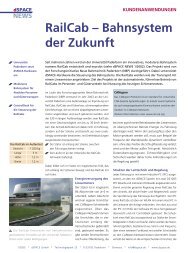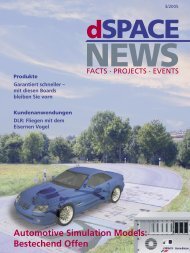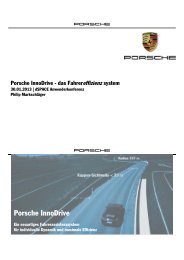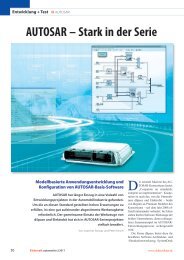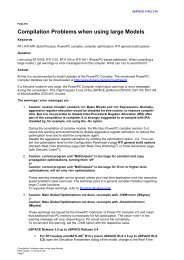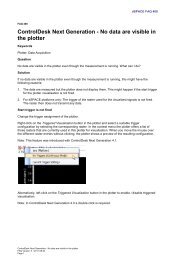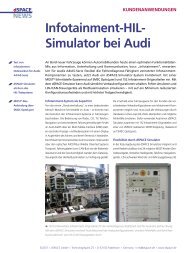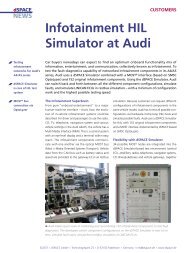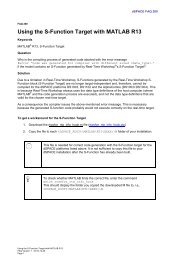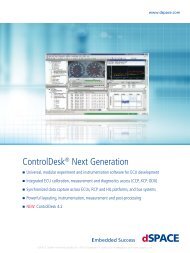magazinE - dSPACE
magazinE - dSPACE
magazinE - dSPACE
Create successful ePaper yourself
Turn your PDF publications into a flip-book with our unique Google optimized e-Paper software.
airfuel ratio control performed by MicroAutoBox<br />
Ratio<br />
Requirements For<br />
air-fuel Ratio Control<br />
Despite the considerable efforts made<br />
in limiting exhaust emissions, the<br />
increasingly stringent environmental<br />
regulations imposed throughout the<br />
world still make achieving a satisfactory<br />
airfuel ratio an ambitious goal.<br />
Furthermore, engine control system<br />
designers have to deal with the<br />
onboard diagnostics requirements,<br />
introduced in 1996 in the US and<br />
later in Europe. This represents a<br />
more critical goal in the field of automotive<br />
control, since it requires the<br />
continuous monitoring of all powertrain<br />
components to prevent critical<br />
faults in exhaust systems. Airfuel<br />
ratio (AFR) control presently relies on<br />
a mean value engine model representation.<br />
But these mean value models<br />
have some significant limitations,<br />
such as the high level of experiments<br />
needed for parameter identification<br />
and the intrinsic nonadaptive features.<br />
On the other hand, the AFR signal<br />
delay is a very critical issue to be<br />
mastered to improve the performance<br />
of closedloop control strategies.<br />
Neural networks are a promising solution<br />
for these challenges. They have<br />
high mapping capabilities and guarantee<br />
a good generalization even<br />
with a reduced set of identification<br />
data. Moreover, by implementing<br />
adaptive training procedures we can<br />
consider the influence of exogenous<br />
effects on the control performance.<br />
Developed Control Strategy<br />
The AFR control strategy is based on<br />
a recurrent neural network (RNN).<br />
The neural network is used as a<br />
controller and its output directly<br />
determines the control actions.<br />
A forward RNN model (FRNNM) of<br />
AFR dynamics was developed. This<br />
took into account the fact that the<br />
dynamic processes affecting the AFR<br />
response depend on both air and fuel<br />
dynamics. Therefore the output,<br />
pAGe 21



